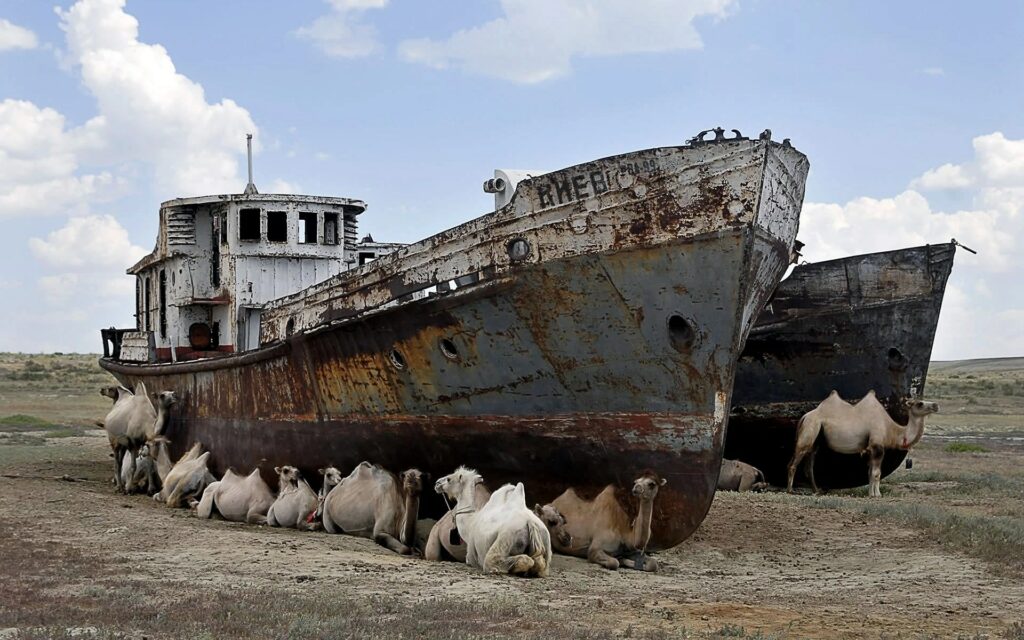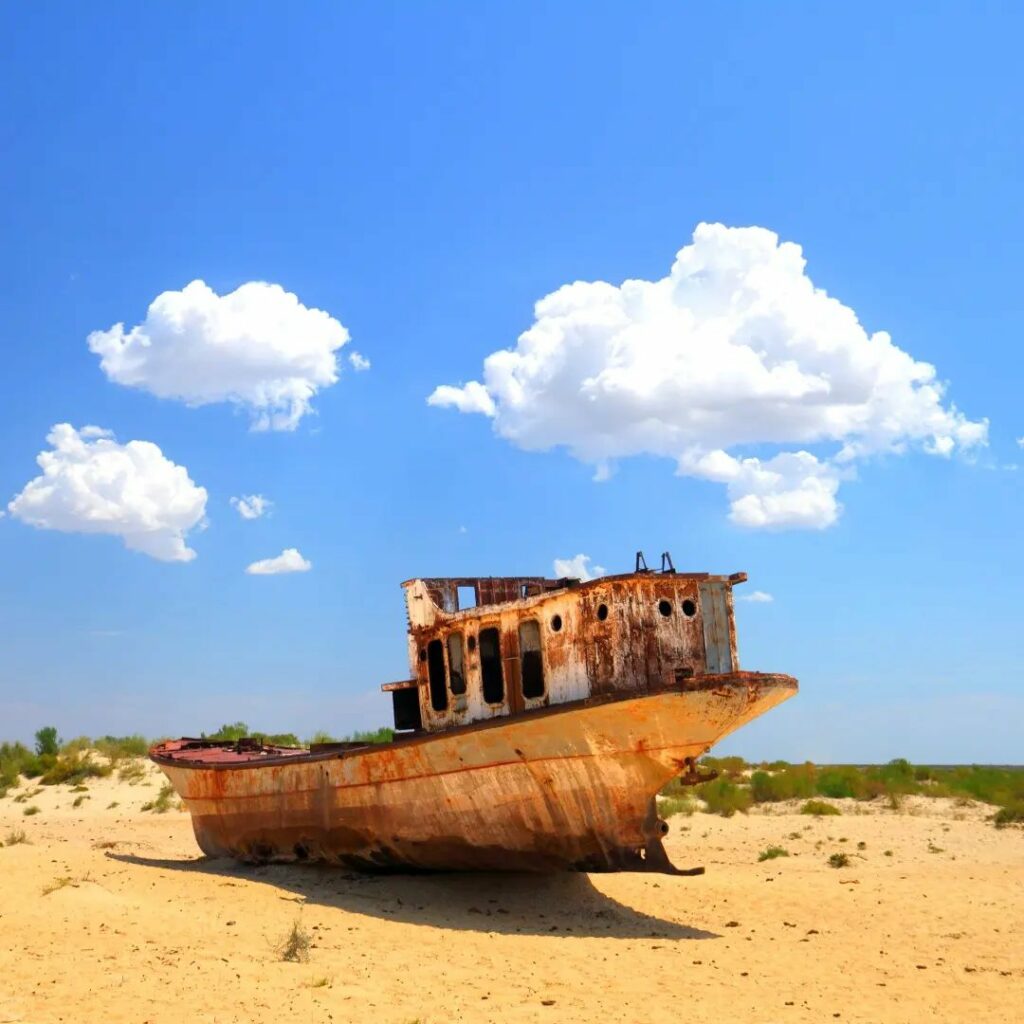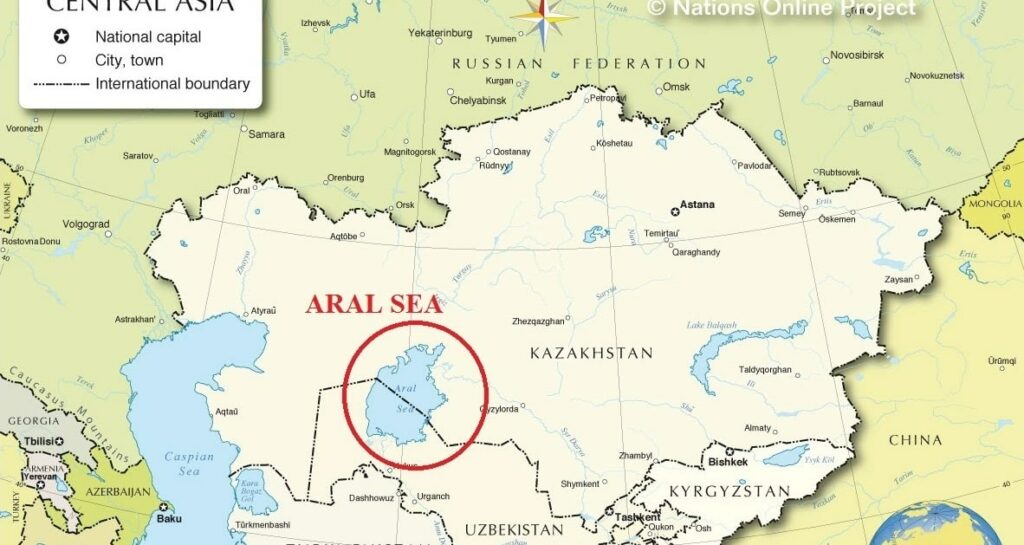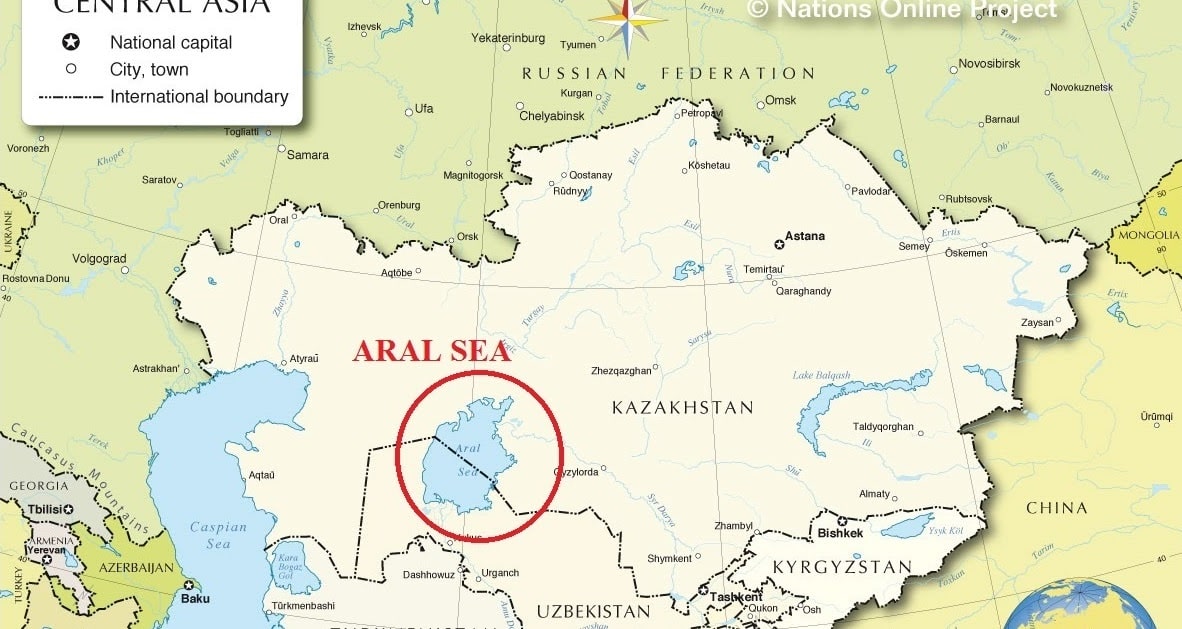The Aral Sea, located in Central Asia between Kazakhstan and Uzbekistan, once occupied a 26,000 square mile region, ranking as the fourth-largest inland water body in the world only 30 years ago. Even Alexander the Great talked about his attempts to cross that ancient sea since it was so large. However, the Aral Sea is only 10% of its original extent now, and it has been divided into two smaller bodies of water.

Human action is what caused this tremendous alteration. In order to irrigate cotton and rice farms in the area in the 1960s, the Soviet government diverted water from the two rivers that fed the Aral Sea. Because of this, the sea started to rapidly contract; by the 1980s, it had lost half of its original volume.
The results were disastrous. Communities that had been supported for decades by fishing suffered a collapse, leaving the once-bustling ports that flanked the shore stranded in a sea of sand. The Aral Sea is now referred to as the “Desert of Ghost Ships,” with rusted hulls and deteriorating infrastructure littering the desolate terrain.

The vanishing of the Aral Sea has had a significant influence on the ecology as well. Due of the hazardous dust that has been produced by the exposed seabed, which contains salt, pesticides, and other chemicals, the area is now experiencing major health issues, such as cancer and respiratory ailments.
The Aral Sea has been under restoration for years, with modest results. Due to a dam constructed on the Kazakh side of the sea, the water level in the northern half of the sea has somewhat increased over the previous ten years. The southern portion of the sea, meanwhile, is still a lifeless wasteland with little indication of recovery.

The history of the Aral Sea serves as a warning about the harm that human activity may do to the environment. It serves as a reminder that the effects of our decisions can have broad and lasting effects.





